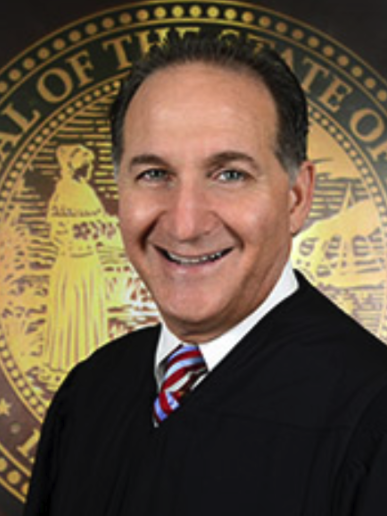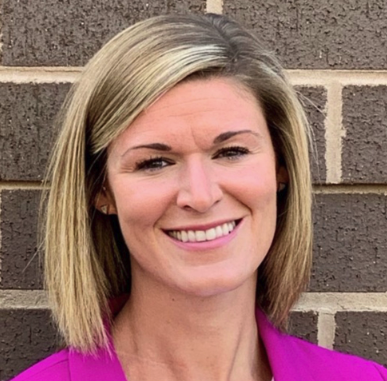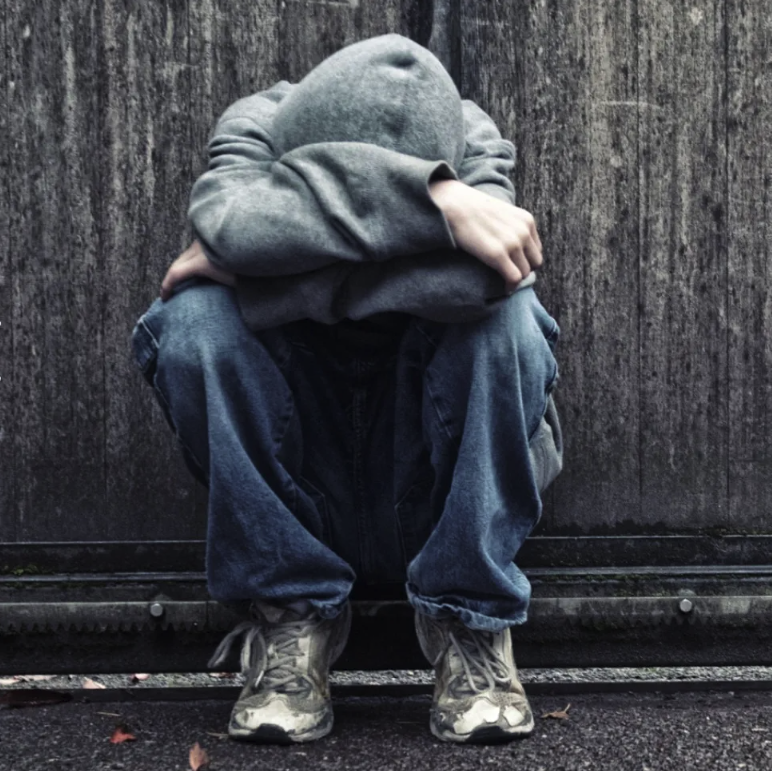by Andrew R. Jones and Sally Kestin, avlwatchdog.org
In previous installments of our series “Down Town,” Asheville Watchdog identified untreated mental illness as a primary driver of the perceived deterioration in downtown Asheville.
Of the people living on the streets of Asheville, of the people arrested for petty crimes downtown and booked into the Buncombe County jail, many are struggling with mental illness or its frequent companion, substance abuse, according to local law enforcement and medical officials.
Certainly not all drug users are mentally ill. But people with untreated underlying mental illness are susceptible to self-medicating — often with alcohol, but increasingly methamphetamine and fentanyl.
Government policies toward the mentally ill changed in recent decades — ostensibly for benign reasons: Rather than send people in mental distress to state-run hospitals, it was believed to be better to integrate them into their home communities. But when state facilities closed, state and local governments failed to allocate enough money to fund local alternatives.
As a result, there aren’t enough beds or resources for troubled people in need of help in Buncombe County. Police in Asheville say their only alternative often has been to arrest mentally ill people for petty crimes. They’re incarcerated for no more than 20 days — a term set by law — released, and sometimes arrested again within hours.
And thus, the Buncombe County Detention Center and the Mission Hospital Emergency Department have become the region’s frontline treatment facilities for people experiencing mental health crises. The results are both inadequate and expensive.
In this, Part 11 of Asheville Watchdog’s “Down Town” series, we’ll look at how other cities have confronted mental health issues — with greater success.
A 24/7 crisis center in Tucson, Arizona
Margie Balfour is adamant about calling mental health care what it is: medical care.
“You don’t have counties going, ‘Well, gee, we’re gonna move our budgets around so you can pay for all these heart attack patients.’ We don’t even talk like that. That sounds ridiculous,” Balfour said, discussing the Pima County, Ari., choice to use capital funds to build Tuscon’s Crisis Response Center, run by Connections Health Solutions.
The center is a 24/7 mental health care hub with a walk-in urgent care facility, a place for police to bring people in crisis, an open area with 30 reclining chairs for adults and 10 for children, and more, all focused on providing evaluations and crisis intervention for anyone who drops in.
Behavioral health is health care, Balfour said. “The health care system should fund mental health emergencies just like they do medical emergencies.”

Balfour, a psychiatrist, is chief of quality and clinical innovation with Connections Health Solutions and a “national leader in crisis care and law enforcement responses to behavioral health emergencies,” according to the National Institute of Justice.
She started with the Tucson crisis center in 2014, three years after it opened.
“The county decided that they needed a crisis center,” Balfour said. “It was really driven by the county wanting to reduce the jail population. So they did a bond election and raised the capital funds to build the building.”
The $54 million bond also paid for a psychiatric hospital and mental health court “so it’s all connected,” Balfour said.
For its first few years , the center struggled, Balfour said. “Safety issues, long waits, things like that.”
The 40-bed center — which sees about 12,000 adults and 2,200 children a year — is now recognized as a national model because of how it incorporates a mental health crisis hotline, mobile crisis teams and law enforcement.
About 20% of the people served by the center are homeless, Balfour said.
“Just like anyone else, we’re trying to figure out what’s going on in their life and what’s driving their crisis and what they need to be connected to,” Balfour said.
Pima County, home to about 1 million, in 2023 identified 2,209 people living in shelters, transitional housing or no home at all.
“I will just be honest, that is one of the most challenging populations,” Balfour said. “We recently did a research study and looked at factors that predict your utilization, and homelessness was one of the most strong predictors.”
Because of its focus on diverting people toward care and away from jail, Tucson’s program makes it less likely that homeless people will fill jails and hospital emergency rooms, often the default when police have no other options.
In Asheville, police say often their only option is the Mission Hospital emergency room, which can tie up officers for hours.
“Our turnaround time for police is about five minutes,” Balfour said. “We never say ‘no’ to police. They have everything they need back there.”
The collaboration with law enforcement is one piece of a crisis system that has seen significant positive outcomes, according to a presentation Balfour gives.
A mental health support team has helped decrease local involuntary hospitalizations from 60% to 20% since 2014. A substance-use response team connected 2,000 people to treatment in its first two years of operation. A homeless outreach team connected 500 homeless people to housing, also in its first two years.
“We’re really close partners with the police, and Tucson Police is one of the most progressive police departments in the nation around mental health,” Balfour said.
Asked what she would say to a city that doesn’t have a crisis response center and law enforcement tie-in, Balfour said there are a number of “clinical justifications” that the Tucson model is better.
First, Balfour said, many people with mental health issues don’t belong in jail, where they stay too long and often are arrested again.
Then, there’s the cost, Balfour said. Studies estimate psychiatric care in a hospital emergency department costs at least $2,300 a day per patient.
And police often lose hours waiting in emergency rooms when they could be back on the streets. “Especially now when a lot of police agencies are really short staffed, that’s a very important thing,” Balfour said.
Finally, she said, having a better crisis response system is better patient care.
“Police aren’t bringing people to the emergency rooms anymore, or into the jails anymore. They’re actually … recognizing that people need help and they’re bringing them to the right place.”
That’s how it should be, Balfour said, reiterating her heart-attack comparison.
“You don’t criminalize having a heart attack,” she said. “You don’t send police, and you don’t take people to jail and you don’t handcuff them. Tucson has really taken an approach where there’s all these opportunities for the clinical system to be able to respond to those crises … It’s become a health-first response.”
Asheville has a psychiatric hospital, Mission Copestone, and a 16-bed crisis facility, the Neil Dobbin Center run by RHA Health Services that generally operates at near capacity with 10 to 12 beds full. That center is part of the larger Comprehensive Care Center at 356 Biltmore Ave., which includes a behavioral health crisis facility with walk-in services and a mobile crisis team that is available 24/7 to 11 Western North Carolina counties.
But families and patient advocates in Buncombe County describe a dearth of mental health treatment options and said the wait for an appointment sometimes takes weeks or months.
A one-stop center for unhoused/mentally ill in Miami
Miami is about to open the first in the nation treatment center for one of the most difficult populations confronting local governments: people with severe mental illnesses, many living on the streets, who cycle in and out of jail.
The seven-story Miami Center for Mental Health and Recovery is the culmination of years of work led by a judge in Miami, Steve Leifman. His journey began not long after being appointed to the bench nearly three decades ago.
Leifman never envisioned he’d be a gatekeeper of the biggest psychiatric institution in Florida — the Miami-Dade County jail system. But jail had become — and often still is — a warehouse for mentally ill people, not just in Florida but in Buncombe County and across the United States.
As Asheville Watchdog reported in Part 7, the same people, many unhoused and with mental illnesses, cycle through the criminal justice system over and over, arrested mostly on misdemeanor “homelessness” crimes such as trespassing or being intoxicated and disruptive. The Watchdog found that since 2010, just in Buncombe County, one man had been arrested 278 times, another 160 times.
In Miami, Leifman was determined to find a better way. The reforms he pioneered have become a national model for breaking the arrest cycle and directing people with mental illness into recovery.

“The biggest problem is we use a criminal justice model for an illness, so it doesn’t work,” Leifman said in an interview with Asheville Watchdog. “You need to design a system that is responsive to what the person’s illness is, its acuity, and what services that they need to actually recover. … And if you do that, you really can have a pretty huge impact.”
A primary goal in Miami was to keep mentally ill people from being arrested in the first place. Police departments in Miami-Dade, the seventh largest county in the nation, had daily encounters with people behaving erratically — and a poor track record that included 19 police shootings of mentally ill victims in one six-year period.
Police in Miami-Dade went through Crisis Intervention Team (CIT) training, a 40-hour program that teaches officers about mental illnesses and how to deescalate people in psychotic episodes. Over a subsequent 10-year period, they responded to more than 105,000 mental health-related calls and made only 198 arrests, Leifman said. “Our police shootings also almost stopped,” he said.
Instead of jail, police can call mobile crisis teams or take people to one of several crisis stabilization units.
In Asheville, the only option often is the Mission Hospital emergency room. The majority of Buncombe County Sheriff’s deputies have received crisis training, and the training is a requirement before Asheville police officers are issued a taser, spokesmen said.
In Miami, people with mental illnesses, many of them unhoused, still wind up in jail but are quickly funneled into psychiatric care.
All jail inmates are screened, Leifman said. Those with a serious mental illness are segregated into a mental health area, seen by a psychiatrist within 24 hours, and if they meet the criteria are transferred to a crisis stabilization unit for about two weeks.
“Once they begin to take medication and stabilize, which most do because they’re sick, they’re not stupid,” Leifman said, “a member of our team, they’re all trained in motivational techniques, goes and meets with them and says, ‘Look, what can we do to help you? We don’t want to see you live this way.’ ”
If the person agrees to enter a treatment program, a “peer worker” — someone like them who successfully broke the cycle — guides them through, arranging housing and transportation, providing food and clothing, accompanying them to medical appointments and 12-Step meetings, and visiting them regularly.
“The peers play a huge, huge role,” Leifman said.
Buncombe County has a jail diversion program, but it is not specific to people with mental illnesses and is not contingent on completing mental health treatment.
The ‘homeless tax’
Miami-Dade was the first in the country to pass a tax to raise money for homeless services and prevention — 1% on meals at restaurants that gross more than $400,000 a year. Started in 1993, the tax was a response to an ugly era of Miami police making mass arrests of homeless people to clear the streets ahead of nationally televised events, and a federal lawsuit against the city by the American Civil Liberties Union.
In Miami, the tax has generated $21 million to $40 million annually and allowed the county to vastly expand housing and treatment options.
“We have about 6,700 people sheltered and in really nice housing every day,” Leifman said.
Buncombe has no tax for homelessness.
Miami-Dade’s jail diversion program has also moved people off the streets and significantly reduced re-arrests. Those who complete the treatment program, in about six months to a year, have their criminal cases dropped.
“And the vast majority [have] stayed out of the criminal justice system,” Leifman said. The recidivism rate among those arrested on misdemeanors has dropped to 20 percent from 75 percent, the judge said, and for those charged with felonies, the recidivism rate is about six percent.
“It’s not perfect; we’ve been successful with 70 to 80% of the population,” Leifman said. The remainder, he said, suffer from acute mental illnesses.
The new Center for Mental Health and Recovery will be targeted at that group with crisis units, living space and a full complement of services.
“It will have a primary health clinic, a dental clinic, an eye clinic, a podiatry clinic and tattoo removal because people do silly things when they’re stoned and psychotic,” Leifman said.
The building will have a courtroom to eliminate the disruption of moving people for hearings, a full basketball court, a library and employment/culinary training. Many of the people will stay for months.
“There will be housing offices and case management. … You won’t leave there without knowing where you’re going, who you’re working with,” Leifman said.
“The idea is, instead of just drop-kicking you to the street once we’ve adjudicated your case, for the most acutely ill we can slowly, gently reintegrate you back into the community in recovery with all the supports that you need to maintain your recovery.”
The center’s cost is being paid with $43 million in county bond money and about $8 million from the public hospital system.
Miami-Dade’s long-standing investment in homeless services, beginning with the homeless tax, has paid off. In the early 1990s, more than 8,000 people camped on the streets, sidewalks and underpasses; today the number is less than 1,100.
Solutions take time, Leifman cautioned. Miami’s mental health center was 14 years in the making.
“It’s a marathon, it’s not a race,” the judge said. “You can fix this, and everybody benefits.”
Leifman now travels the country speaking to other judges and cities about breaking the arrest cycle for mentally ill defendants. It begins with that initial 911 call.
“The data show that only about 7% of mental health crisis calls need police, where there’s a weapon or there’s a threat,” Leifman said. “And in those other 93%, you probably want a civilian EMT type of response.”
Alexandria co-responder police and mental health teams
Alexandria, Va., in 2021 began a “co-response” program pairing specially trained police officers with licensed behavioral health workers to respond to mental health-related 911 calls.
The team is dispatched to obvious calls like suicide attempts. “We often just listen to the radios, we’re driving around and kind of look at the call notes, and if we think that there is a possibility for mental health to be a factor … we’ll go by and see if we can offer any assistance,” said Megan Hencinski, a psychologist and therapist supervisor in the program.
The team responds to the kinds of calls that have generated complaints and arrests in Asheville, such as someone cursing or behaving erratically in public or refusing to leave a business.

“Sometimes those individuals are experiencing a mental health crisis that requires a hospitalized intervention; sometimes they just need assistance, knowing where the shelters are,” Hencinski said. “You want to make sure that you’re diverting individuals from the criminal justice system when you can because it becomes such a cycle and revolving door.”
An evaluation of the program after the first year found calls handled by the team resulted in fewer involuntary hospitalizations and arrests, and more referrals to outpatient mental health, substance abuse and other services compared to calls handled by traditional police teams.
Twenty calls “met criteria for arrest,” the evaluation said, and “70% were diverted away.”
Based on the results, the Alexandria City Council expanded the program, Hencinski said. It now has three teams on duty every day from 10 a.m. to 9:30 p.m. at an annual cost of about $700,000.
In Buncombe, community paramedics are available to assist police on certain calls, but there is no co-responder program.
Greenville’s downtown outreach teams
Greenville business owners were getting frustrated. It was in the heat of the pandemic. Merchants, residents and city leaders were seeing more people experiencing homelessness and in crisis.
“They didn’t know when to call the police and when to call somebody else,” said Loraine Crowl, CEO of United Housing Connections, the organization that oversees homeless and housing services in the area.
“We honestly started this conversation in 2020 with the city,” she said. “We’re seeing additional folks experiencing homelessness on the street; things have closed down because of the pandemic. We need to try to get ahead of this.”
That led to a UHC outreach team in Greenville’s downtown. It has contributed in part to nearly 90 people getting off Greenville streets and into homes since 2021, Crowl said.
“They are out every day of the week,” Crowl said. “There’s a two-man team on the day shift and on the weekends and several times in the evening, literally connecting with people on the street and talking to them about their barriers to housing.”
Equally important, downtown merchants and the public have a way to report concerns without calling 911. The team has a phone number and an email address listed on the city website along with a recommendation about how to interact with people in a mental health crisis.
“Leave this work to the professionals,” the site instructs. “If the person appears to have mental health issues and is experiencing homelessness but not in immediate crisis, send an email with the location and description of the person.”
Asheville contracts with a nonprofit to provide street outreach, and the city fire department recently assigned firefighters to respond to crises downtown in a 60-day pilot program.
Buncombe County residents reported “overwhelming concerns of mental health and substance use-induced crises within the unsheltered population” in a survey conducted by a national consultant last year, but said “they do not know what to do about it or who to call.”
The outreach team in Greenville — social workers who collaborate with police — was a first for the city of more than 72,000.
“We had never received federal, state, city, county or municipality funding for outreach before,” Crowl said. “It was something that this administration stepped out on the limb and said, ‘We’re going to do this, we’re going to provide [funding] for you to put an outreach team on the street because you have to define the problem first.’ ”
Downtown merchants praise the outreach program.
“I can pick up the phone and call and typically somebody will be there in relatively short order,” said Veera Gaul, owner of Oil & Vinegar on Main Street downtown. “I think as a business owner, I have too many other things to worry about, and as much as I would like to be involved in learning how to de-escalate the issues, I’m not fully trained to do that.”
UHC set up an email address that funnels reports of people experiencing homelessness to the outreach team.
Police stay “away if our outreach team is talking to folks,” Crowl said. “If they need us to do something [police] will call or email the outreach and let us be the first responder if it’s not a police matter.”
NEXT: The Watchdog’s Down Town series concludes with what experts say is the main driver of homelessness and related problems: the lack of affordable housing in Asheville.
Asheville Watchdog is a 501(c)(3) nonprofit news team producing stories that matter to Asheville and surrounding communities. Andrew R. Jones is a Watchdog investigative reporter. Email arjones@avlwatchdog.org. Sally Kestin is a Pulitzer Prize-winning investigative reporter. Email skestin@avlwatchdog.org. To show your support for this vital public service go to avlwatchdog.org/donate.




Before you comment
The comments section is here to provide a platform for civil dialogue on the issues we face together as a local community. Xpress is committed to offering this platform for all voices, but when the tone of the discussion gets nasty or strays off topic, we believe many people choose not to participate. Xpress editors are determined to moderate comments to ensure a constructive interchange is maintained. All comments judged not to be in keeping with the spirit of civil discourse will be removed and repeat violators will be banned. See here for our terms of service. Thank you for being part of this effort to promote respectful discussion.